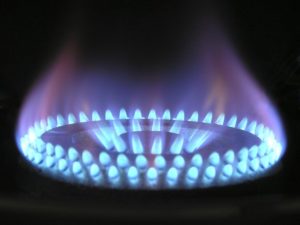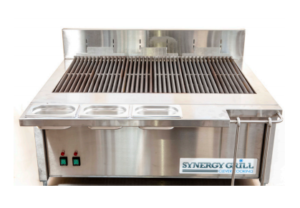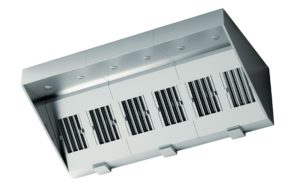
Running a modern commercial kitchen requires that you cut down on unnecessary spending in order to run a successful business. One way to ensure that you save on the money front is by saving on the energy you consume on a daily basis.
Observing energy-saving measures in your commercial kitchen not only saves your business money in operating costs, but it also potentially extends the life expectancy of equipment and creates a greener, healthier planet.
Many commercial kitchen owners have experienced more positive returns from observing simple yet important energy conservation techniques. You, too, can experience the same. Here are a number of things you can do, as a commercial kitchen owner to ensure that there is responsible energy consumption in your kitchen.

Switch Off or Turn Down
Switch off lights and equipment that is not in use. Depending on your establishment, lights will take up a significant portion of your energy spending if not used properly. Lights alone have been estimated to use up to 13% of energy in a commercial kitchen and restaurant. It helps to keep them switched off when the area is not in use.
If any equipment is needed in the near future, turn down settings to a lower temperature. This saves energy during quiet periods but can still get back up to temperature quickly when needed. This should not only be restricted to cooking equipment but also ventilation and extraction lights.
Switching off or turning down saves money and reduces residual heat output generated by working equipment to lower ambient kitchen temperatures to create a more comfortable working environment. Commercial induction hobs are a great energy saver as it is effectively in ‘stand-by’ mode and only uses energy when a pan is on the cooktop.
Buy Energy Efficient Equipment
Always buy equipment built for energy efficiency. This can manifest in a number of features. Look out for LED lights rather than a standard incandescent bulb. Look out for refrigeration MEPS label which show the energy efficiency based on strict testing in a handy assigned rating.

Catering equipment such as the Synergy Grill, are also highly efficient and will use less energy than their conventional counterparts.
Buying energy-efficient equipment for your commercial kitchen might come with a higher initial cost but will save you money in the long-run. The good news is that there are technical advancements which give you more choices to pick from.
Look for quick heat up and minimum heat recovery times i.e. time taken after use, for equipment to get back up to optimum temperatures and ready for use again.
Observe Proper Maintenance
Correct and regular cleaning and maintenance as per manufacturer recommendations are vital. Some of the light maintenance tasks you can carry out in your commercial kitchen include:
- Checking seals and gaskets. These are usually found on your oven and refrigerators. They help prevent the loss of air (either hot or cold depending on the equipment) when the doors are closed. Faulty seals and gaskets mean that the unit will work harder to produce the required results.
- Cleaning condenser coils. These are found in your refrigerator and can lead to excessive use of power if not functioning properly.
- Clean out dirty or clogged vents with a build-up of grease. This prevents fires and helps the equipment work more efficiently.
- Don’t forget about your ventilation and extraction systems.
Keeping a regular maintenance schedule not only saves your equipment from using up too much energy but also helps reduce your chances of having to replace valuable equipment due to wear and tear.
Use OEM Parts
Also known as Original Equipment Manufacturer parts, OEM parts are made directly by the manufacturer of whatever equipment you are trying to repair. OEM parts are costlier than non-OEM parts. However, they will save you further repairs and replacements in the future as they are designed specifically for the equipment rather than a universal alternative.
Address Your Kitchen Layout
This pertains to how your kitchen is arranged and how each individual equipment and item is placed in relation to others. Believe it or not, how you arrange your kitchen can have an effect on how much energy you consume every year.
For example, all cooking equipment will produce heat. Therefore, group cooking equipment together with adequate commercial kitchen ventilation.

Keep any commercial refrigeration separate unless it’s specifically designed to operate in higher ambient temperatures.
Don’t have two appliances that can do one job unless you really have to. It also helps to have a linear circulation in your commercial kitchen. This means arranging every equipment in a straight line and with the shortest distance as possible between relatable equipment. This prevents interference and cross-contamination during working hours.
Having the correct layout can help equipment perform efficiently and will reduce the strain during operation.
Train your Kitchen Staff
It won’t help to try and conserve energy in your commercial kitchen if your staff do not know how to do the same. Give your staff adequate training in proper energy maintenance techniques in your kitchen to ensure that you are all on the same page. Finally, ensure that they develop the positive habits within the kitchen which help in energy preservation.
Maintaining an energy-efficient commercial kitchen is not hard, neither does it require that you go out of your way. On the contrary, it only requires that you take simple, yet important actions in your day to day operations. Little steps will go a long way in the conservation of energy in your business.
